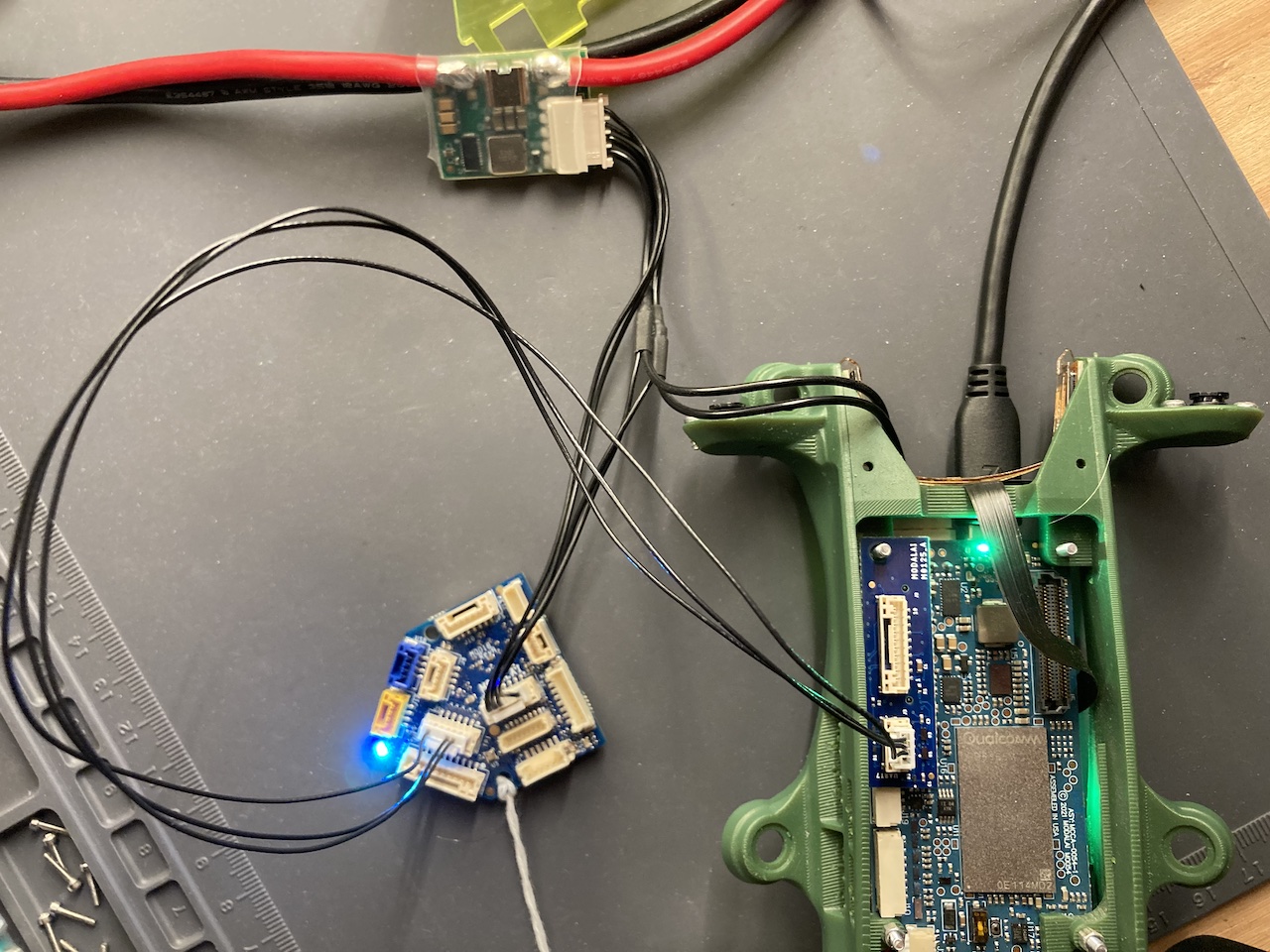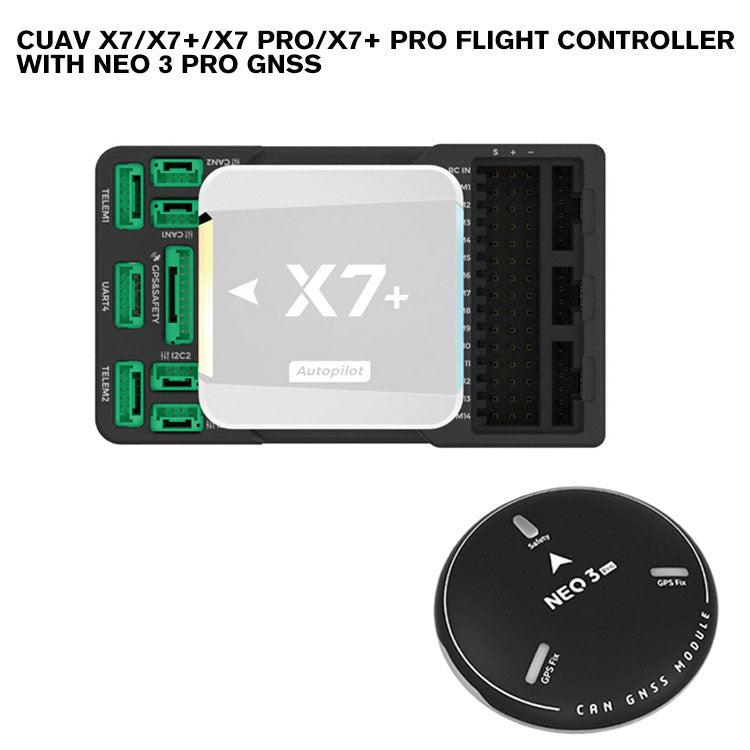The Prospective of UAVs: SparkNavi Drone Flight Controller and GNSS/INS Made in Taiwan
The Prospective of UAVs: SparkNavi Drone Flight Controller and GNSS/INS Made in Taiwan
Blog Article
Discovering the Role of Drone Trip Controllers in Enhancing Trip Stability and Navigating Performance
The development of drone innovation has significantly enhanced the relevance of trip controllers, which act as the brain of these airborne lorries. By incorporating real-time data from a range of sensors, trip controllers enhance flight security and navigation efficiency, making certain that drones can operate smoothly even in complicated environments. This conversation will certainly check out the vital elements that contribute to these improvements, along with the implications for the future of self-governing flight. What advancements lie in advance that could further transform the capabilities of drone trip controllers?

Recognizing Trip Controllers
Flight controllers are integral components in the performance of drones, functioning as the brains that take care of and support flight procedures. These sophisticated gadgets process information from different sensing units, including accelerometers, gyroscopes, and GPS, to guarantee that the drone maintains its designated trip course. The flight controller analyzes this information and carries out commands based on pre-defined algorithms, enabling the drone to react to ecological modifications, such as wind or obstacles.
The main feature of a trip controller is to preserve stability during trip. It attains this by making real-time changes to the drone's electric motors and control surfaces, ensuring balance and control. Additionally, contemporary trip controllers include advanced attributes such as waypoint navigating, enabling automated flight courses and improved operational effectiveness.
Comprehending the design of flight controllers is vital for both enthusiasts and specialists. As modern technology advancements, flight controllers have actually ended up being much more compact and capable, incorporating fabricated knowledge to improve decision-making procedures and adapt to intricate flight circumstances.
Trick Elements of Trip Security
Achieving ideal flight stability in drones counts on several key components that operate in show to ensure controlled and smooth procedures. Central to this stability is the trip controller itself, which refines data from different sensing units to maintain the preferred trip perspective. This consists of accelerometers and gyroscopes that determine movement and positioning, enabling real-time modifications to the drone's position.
One more vital part is the electronic speed controllers (ESCs), which regulate the power supplied to the electric motors. By finely adjusting electric motor speeds in feedback to trip controller commands, ESCs assist maintain equilibrium and neutralize disruptions caused by wind or abrupt activities.
Additionally, the style of the drone's structure plays a crucial function in trip security. A well-structured frame lessens resonances and boosts the overall wind resistant profile, adding to smoother flight qualities. Lastly, the assimilation of sophisticated formulas within the trip controller help in predictive adjustments, making sure a receptive and adaptable flight experience.
Together, these parts create a cohesive system that improves a drone's security, permitting precise maneuvering and boosted performance in various flight conditions.
Navigation Efficiency Techniques
Performance in navigating is essential for enhancing drone operations, especially in complex atmospheres. Efficient navigating strategies boost the ability of drones to go across challenging terrains and prevent barriers, thereby improving functional performance and security.
One famous technique is the execution of sophisticated GPS and inertial dimension devices (IMUs) that give exact location tracking and positioning data. These modern technologies permit drones to determine optimum trip paths in real-time, taking into consideration numerous factors such as wind problems and prospective barriers.
An additional technique includes the usage of algorithms for path planning and optimization. Algorithms such as A * and Dijkstra's algorithm can be released to establish the most effective route while minimizing energy intake and flight time. Moreover, incorporating artificial intelligence designs can enable drones to adaptively gain from their environments, boosting navigating capacities through experience.

Influence on Autonomous Drones
The combination of sophisticated navigating strategies has exceptionally transformed the abilities of independent drones, enabling them to run with better freedom and precision. SparkNavi drone flight controller and GNSS/INS made in taiwan. These improvements are mainly credited to sophisticated trip controllers that use real-time information handling and sensing unit combination, enabling drones to navigate intricate environments seamlessly
The effect on self-governing drones prolongs past mere navigating; it includes boosted challenge avoidance, enhanced stability during vibrant conditions, and enhanced objective reliability. By leveraging algorithms that include artificial intelligence and fabricated intelligence, drones can adjust to transforming circumstances, making notified decisions that optimize their trip courses while reducing dangers.
In addition, the execution of robust flight controllers you could try here has helped with browse around here the implementation of intricate jobs, such as aerial inspections, delivery solutions, and farming monitoring, with marginal human intervention. This capability not just improves procedures yet additionally minimizes human mistake, thereby enhancing general security.
Because of this, the functional extent of independent drones has expanded considerably, making them important devices in various industries. Their capability to perform effectively in varied situations emphasizes the essential function that progressed trip controllers play in shaping the future of unmanned airborne systems.
Future Patterns in Flight Control
Often, innovations in flight control innovation are poised to redefine the landscape of drone operations in the coming years. Arising trends suggest a considerable shift in the direction of boosted fabricated knowledge (AI) assimilation, allowing flight controllers to process real-time data a lot more successfully. This evolution will facilitate better decision-making abilities, enabling drones to adapt to vibrant ecological problems autonomously.
In addition, the implementation of artificial intelligence formulas is anticipated to enhance predictive maintenance, consequently decreasing downtime and expanding the lifecycle of drone elements. This have a peek at this site positive method to maintenance will certainly be crucial as drone applications increase across different sectors, from farming to logistics.

.jpg)
Last but not least, innovations in protected interaction protocols will deal with security and regulative worries, making certain that drones can operate effortlessly in busy airspaces (SparkNavi drone flight controller and GNSS/INS made in taiwan). Collectively, these patterns direct towards a future where flight control systems are not only smarter and a lot more also capable however reliable of running safely in a significantly integrated airspace
Conclusion
In final thought, drone flight controllers are important to enhancing flight stability and navigation effectiveness through the advanced handling of sensor information. By preserving optimum flight perspectives and utilizing sophisticated algorithms for path optimization and obstacle evasion, these controllers substantially add to the autonomy and functional safety and security of drones. As innovation continues to develop, additionally innovations in trip control systems are expected, promising improved performance and increased capabilities in the realm of unmanned airborne vehicles.
By integrating real-time information from a range of sensing units, flight controllers improve trip stability and navigation performance, making certain that drones can operate smoothly even in complex settings.Flight controllers are integral elements in the functioning of drones, offering as the brains that maintain and manage trip operations. In addition, contemporary trip controllers incorporate advanced functions such as waypoint navigation, allowing for automated flight courses and improved functional efficiency.
Central to this security is the flight controller itself, which refines information from different sensing units to preserve the desired trip perspective.In final thought, drone trip controllers are important to improving flight stability and navigation performance through the sophisticated handling of sensor data.
Report this page